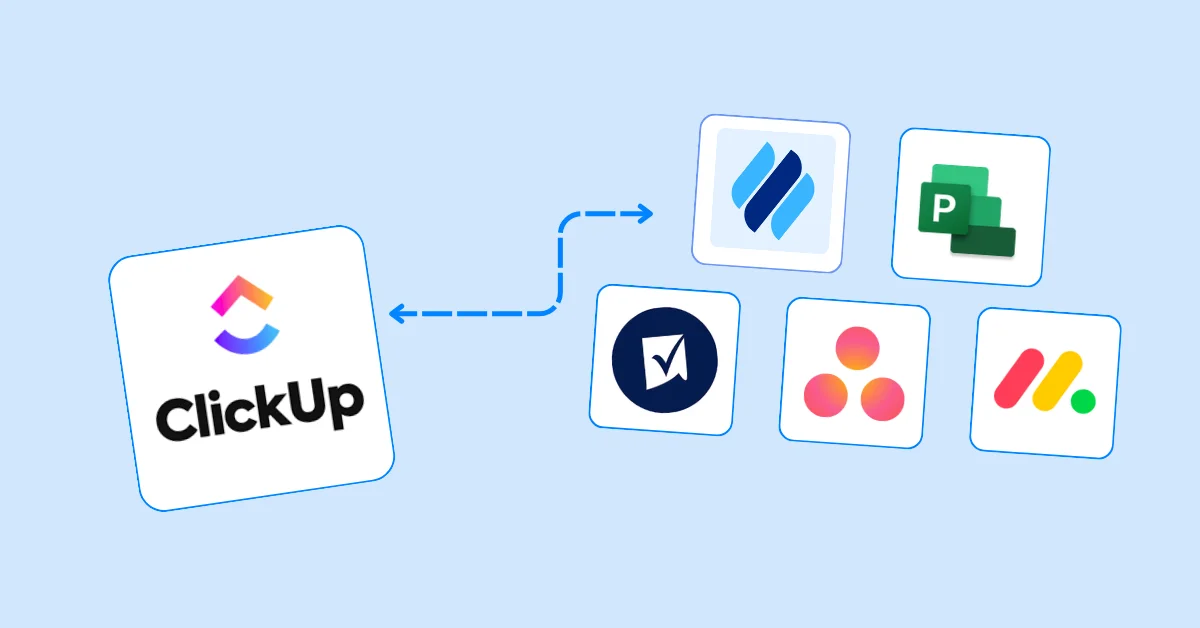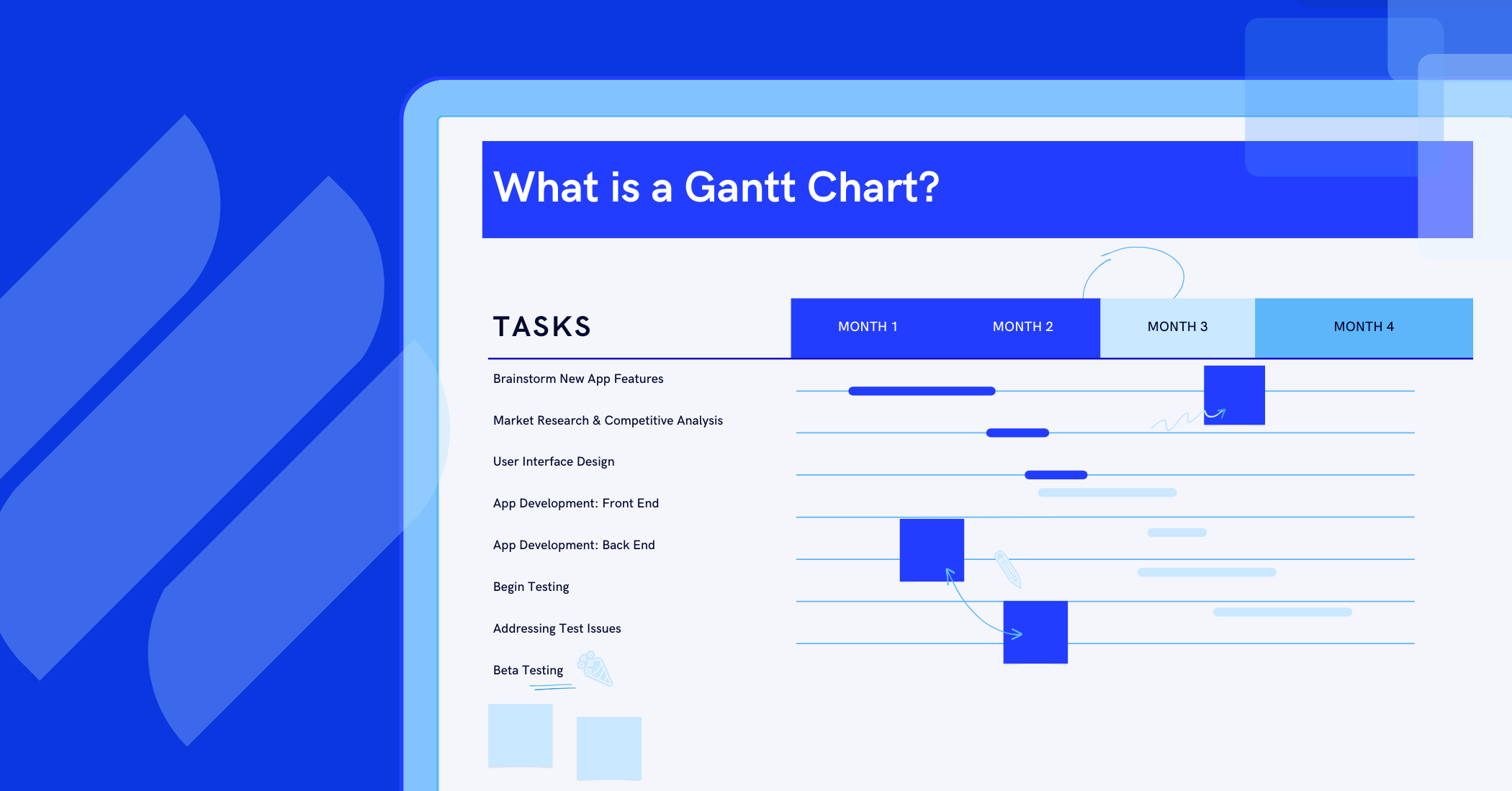Project Statuses in Portfolio Management: A Framework for Leaders
Project statuses are critical signals in portfolio management. Discover common categories, pitfalls, and how they shape smarter decisions.
In portfolio management, few elements are as simple yet as powerful as project statuses. At first glance, they may seem like quick labels — On Track, At Risk, or Delayed. But when viewed across an entire portfolio, these statuses become vital signals that shape decisions about funding, prioritization, and strategy.
The challenge many leaders face is that project statuses are often inconsistent, overly simplified, or misinterpreted. A “green” status in one team might mean steady progress, while in another it simply reflects optimism despite underlying risks. Without a shared framework, portfolio leaders risk making decisions based on unclear or even misleading information.
By mastering status reporting, you’ll unlock better alignment, faster decision-making, and a clear path to strategic goals. Let’s dive into how a structured approach to project statuses can elevate your leadership in PPM.
What Are Project Statuses?
Project statuses are simple labels that indicate the current health or progress of a project. They summarize key factors like schedule, budget, scope, and risks into an easy-to-read signal for stakeholders.
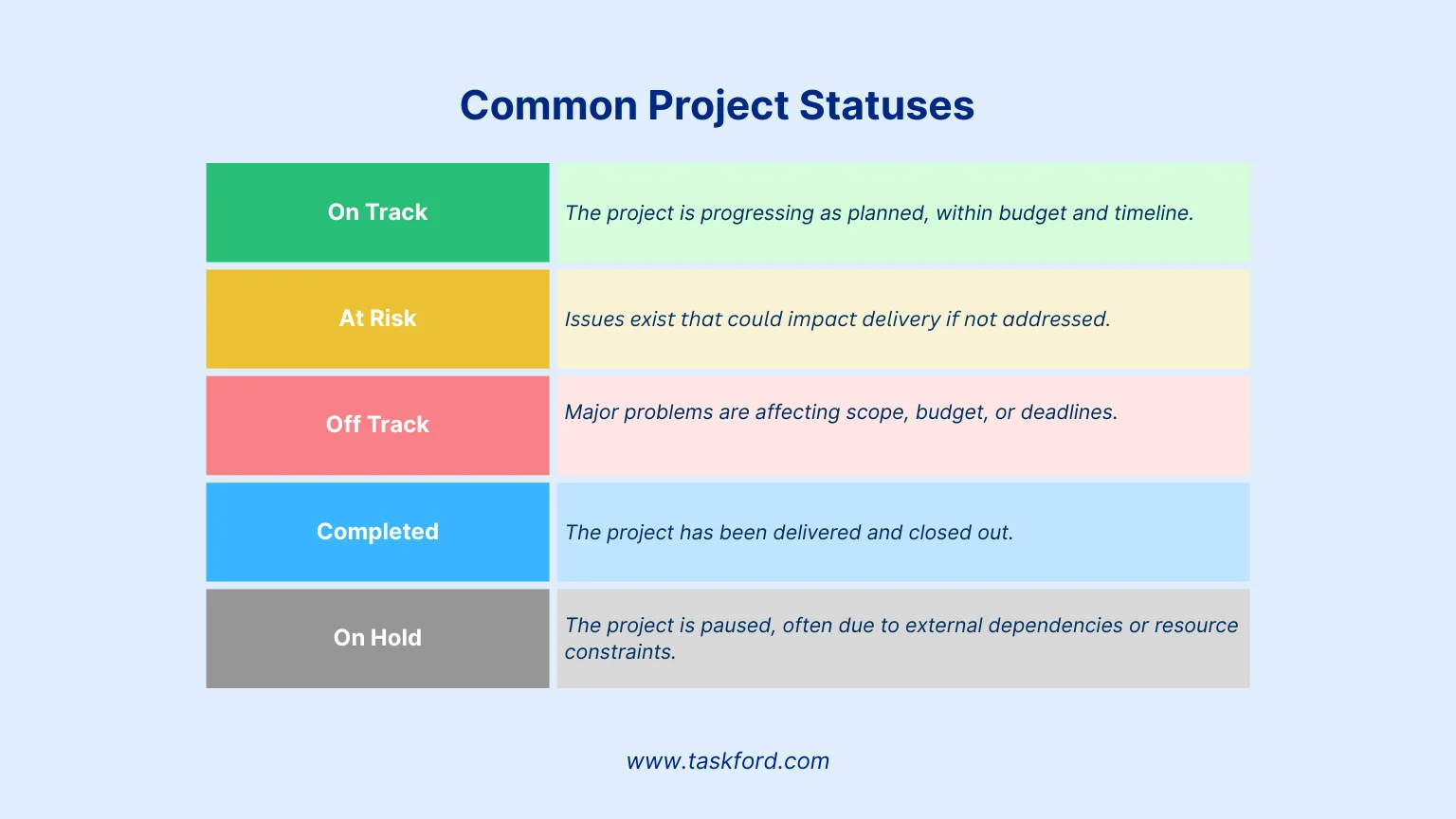
Common examples include:
- On Track (Green): The project is progressing as planned, within budget and timeline.
- At Risk (Yellow/Amber): Issues exist that could impact delivery if not addressed.
- Off Track / Delayed (Red): Major problems are affecting scope, budget, or deadlines.
- Completed (Blue/Closed): The project has been delivered and closed out.
- On Hold (Gray): The project is paused, often due to external dependencies or resource constraints.
While these categories seem straightforward, their interpretation often varies between teams. This is why standardizing project statuses across a portfolio is critical — without consistency, the labels lose meaning and can mislead decision-making.
The Role of Project Statuses in Portfolio Management
In portfolio management, project statuses are more than simple labels — they are critical signals for oversight and alignment. When applied consistently, they help leaders balance resources, anticipate risks, and ensure the portfolio remains aligned with strategic objectives.
Project statuses enable leaders to:
- Prioritize resources – A portfolio with multiple At-Risk projects may prompt leaders to shift capacity from On Track initiatives. Research and tools such as Ravetree show that clear status reporting can reduce resource overload by up to 25%.
- Mitigate risks – Statuses act as an early warning system. Governance frameworks that incorporate standardized reporting have been shown to reduce project failure rates by nearly 20% through timely interventions.
- Enhance transparency – Standardized definitions, such as those found in Microsoft ’s triple diamond framework, give all stakeholders a shared understanding of portfolio health and progress.
Ultimately, project statuses serve as decision-making inputs. They allow leaders to see beyond individual projects, identify systemic issues, and make portfolio-level choices that keep execution aligned with strategy.
Common Project Status Categories (and Their Limitations)
The following table summarizes widely used project status categories, their typical color codes, descriptions, and examples of their application in PPM. These are drawn from standards like PMI and practices in project management tools.
Common Project Status Categories in Portfolio Management
| Status Category | Color Code | Typical Meaning | Example Use in PPM |
|---|---|---|---|
| On Track | 🟢 Green | The project is progressing within scope, budget, and schedule. | A software development project hitting all sprint milestones in a tech portfolio. |
| At Risk | 🟡 Yellow/Amber | Potential issues exist that could escalate if not addressed. | A construction project is facing supply chain delays but is still within budget. |
| Off Track | 🔴 Red | Major issues are impacting scope, schedule, or budget; immediate action is required. | A marketing campaign exceeding budget with delayed deliverables in a portfolio. |
| Completed | 🔵 Blue | All deliverables are met; the project is closed or handed over for operations. | A product launch was successfully handed off to operations. |
| On Hold | ⚪ Gray | The project is temporarily paused due to dependencies or resource constraints. | A portfolio project awaits regulatory approval before proceeding. |
Limitations of Project Status Categories
While these categories provide a useful snapshot, they also come with challenges that limit their effectiveness in portfolio management:
- Oversimplification – A single color or label can’t capture the complexity of large initiatives. For example, a project may be on schedule but significantly over budget, yet still marked green.
- Inconsistent criteria – Different teams often apply different definitions. What one considers At Risk may still be reported as On Track elsewhere, leading to unreliable comparisons.
- Green bias – Teams may hesitate to escalate issues, keeping projects green until problems become critical, which delays leadership intervention.
- Lack of context – Statuses indicate what is happening, but not why. Leaders often need additional data (budget variance, risk scores, milestone progress) to interpret the meaning behind a label.
These limitations highlight why organizations need a standardized and data-driven framework to make project statuses meaningful at the portfolio level.
A Proposed Framework for Leaders: The STATUS Model
To overcome the limitations of traditional status categories, leaders need a framework that ensures project statuses are consistent, actionable, and tied to strategic outcomes. The STATUS Model provides this structure, offering a cycle that connects individual project health with portfolio-level decision-making.
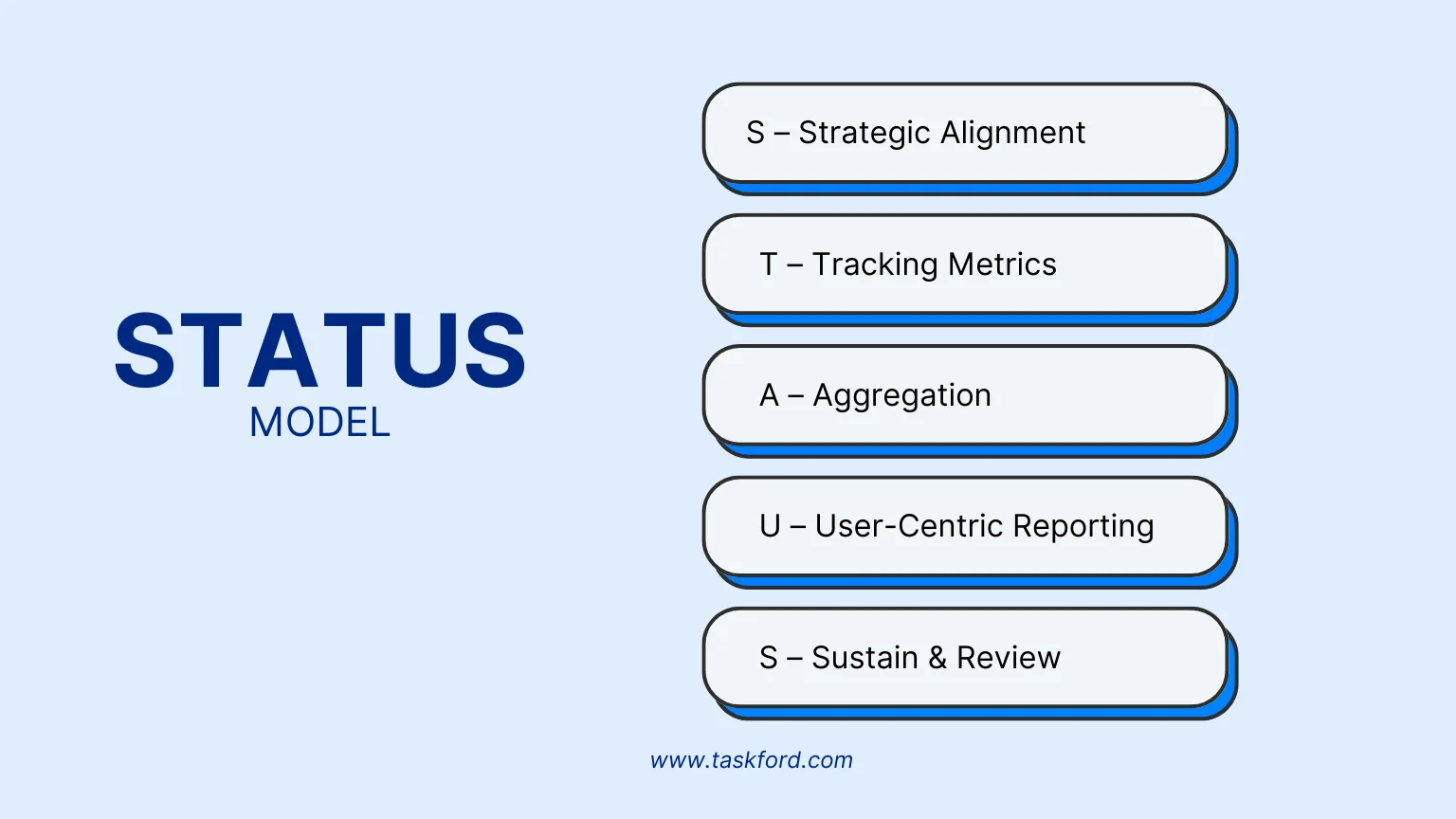
S – Strategic Alignment
- Link every status to broader portfolio and business objectives.
- Example: A project marked At Risk should identify which strategic goal is being threatened (e.g., delayed market entry).
T – Tracking Metrics
- Use objective KPIs to define statuses.
- Examples:
- Milestone completion rate (on track if ≥ 90%).
- Budget variance (>10% over = At Risk).
- Risk score thresholds based on probability × impact.
A – Aggregation
- Roll up statuses into portfolio dashboards for pattern recognition.
- Example: Several “At Risk” projects in one business unit may indicate systemic capacity issues.
U – User-Centric Reporting
- Tailor how statuses are presented to different stakeholders.
- Executives → portfolio heatmaps and dashboards.
- Project managers → Gantt Charts or Kanban boards.
- Tools like Linear help link project statuses directly to initiatives, ensuring visibility across levels.
S – Sustain & Review
- Conduct post-project audits to review how statuses were reported.
- Refine thresholds, definitions, and reporting practices to improve accuracy over time.
From Project Statuses to Portfolio Insights
A single project status tells you how one initiative is performing. However, the real value for leaders lies in analyzing statuses collectively across the portfolio. This aggregated view transforms scattered project updates into actionable portfolio insights.
Project statuses at the portfolio level can reveal:
- Patterns and hotspots – If several projects in one division are At Risk, it may point to systemic issues like resource shortages or process gaps.
- Strategic alignment – Consistently On Track projects linked to a specific business goal show that execution is aligned with strategy.
- Early warning signals – A rise in Off-Track projects across different programs could signal portfolio-level risks such as dependency conflicts or funding gaps.
- Investment decisions – Leaders can use status trends to decide where to double down, pause, or stop initiatives altogether.
By moving beyond individual project health, leaders turn status reporting into a portfolio intelligence system. This enables more accurate forecasting, better prioritization, and stronger alignment with organizational goals.
Leveraging TaskFord’s Dashboards for Portfolio-Level Status Visibility
Managing project statuses across a portfolio requires more than static reports — it demands a centralized view that updates in real time. This is where TaskFord's provides clear visibility into how projects are performing and how the portfolio is progressing toward strategic goals.
From this dashboard, leaders can:
- Track project flow – Metrics like Completed, Created, Updated, and Overdue tasks show activity trends and highlight delays across projects.
- Monitor statuses in real time – The Task Status chart (To Do, In Progress, Done) offers an instant view of progress distribution across initiatives.
- Balance priorities – The Priority Breakdown shows whether work is skewed toward low- or high-value tasks, guiding leaders on where to focus attention.
- See team workload at a glance – Workload bars reveal how capacity is spread, helping avoid overloading individuals and identifying underutilized resources.
- Maintain transparency – The Update Feed logs recent changes, ensuring stakeholders have visibility into what’s moving forward and what’s stalled.
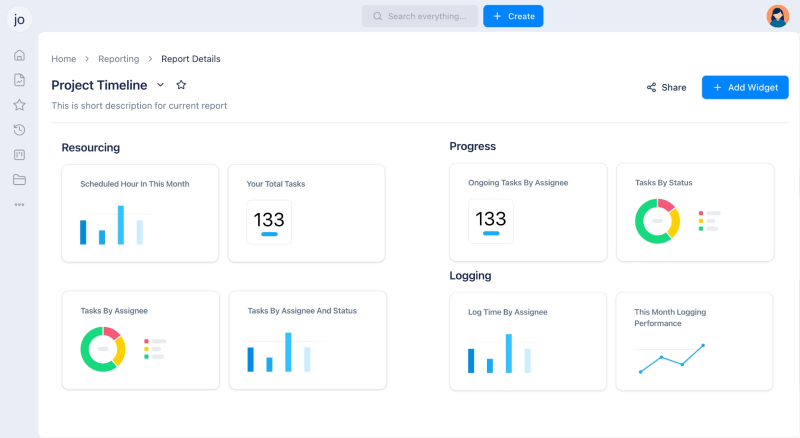
By combining status categories, task flow, priorities, and workload data in one view, TaskFord’s Dashboards transform static reporting into dynamic portfolio intelligence. Leaders can quickly spot risks, rebalance resources, and ensure projects align with organizational goals.
Evolving the Framework in Agile/Hybrid Environments
Traditional status reporting was designed for linear, waterfall projects. But in Agile and hybrid settings, where priorities shift quickly, statuses must adapt.
Leaders can evolve project statuses by:
- Moving from static to sprint-based or weekly updates.
- Tracking incremental progress (velocity, backlog health, release readiness).
- Blending Agile metrics with traditional ones (e.g., budget variance).
- Reframing categories to suit Agile teams (Healthy, Needs Attention, Blocked).
- Emphasizing outcomes delivered rather than tasks completed.
In Agile or hybrid environments, project statuses should emphasize continuous visibility and delivered value — not rigid checkpoints.
Conclusion
Project statuses may seem like simple labels, but at the portfolio level, they serve as critical signals for strategy and decision-making. When standardized and supported by clear criteria, statuses help leaders anticipate risks, allocate resources wisely, and keep execution aligned with organizational objectives.
By moving beyond oversimplified categories and adopting a structured framework such as the STATUS Model, project statuses become more than updates — they evolve into actionable insights that strengthen portfolio management and support long-term success.
Continue Reading
- IT Project Life Cycle Phases: A Step-by-Step Breakdown (With Examples)
- Gate Reviews in Project Management: Definition, Benefits, and Steps
- Project Governance for Large-Scale and Complex Projects
- Zoho Projects Alternatives for Small Businesses on a Budget
Making work simpler,
smarter, and more connected
Join our waitlist and be notified first.

Related Blog
Subscribe for Expert Tips
Unlock expert insights and stay ahead with TaskFord. Sign up now to receive valuable tips, strategies, and updates directly in your inbox.



